Check out our guide to the 30 best books to read for mental health. Whether you’re struggling or want to help someone you love, these are great resources.
According to the World Health Organization, mental health conditions are rising. In the last decade, mental health concerns have increased by 13%, and around 20% of children worldwide have a mental health condition. These mental health concerns can cause a variety of health problems if left untreated. While professional help from a psychotherapist, trained therapist, or other mental health professional is vital, reading books and practicing gratitude journalling can help people understand and manage their mental health struggles.
Due to the stigma around mental health conditions, it can be hard to open up and talk about this topic, so education is key to moving forward. This list of the best mental health books includes books written by therapists, psychologists, and other mental health experts that can help to break the stigma and help people regain control of their mental well-being.
Contents
- 30 Best Books To Read For Mental Health Ranked
- 1. The Body Keeps the Score: Brain, Mind, and Body in the Healing of Trauma by Dr. Bessel Van Der Kolk
- 2. Brain Inflamed by Dr. Kenneth Bock
- 3. All the Things We Never Knew: Chasing the Chaos of Mental Illness by Sheila Hamilton
- 4. I Thought It Was Just Me, But It Isn’t by Brene Brown
- Books for Children on Mental Health
- 5. A Blue Kind of Day by Rachel Tomlinson
- 6. A Little SPOT of Anxiety: A Story About Calming Your Worries by Diane Alber
- 7. Ruby’s Worry by Tom Percival
- 8. The Sad Book by Michael Rosen
- 9. Mr. Worry: A Story About OCD by Holly L. Niner
- 10. A Terrible Thing Happened by Margaret M. Holmes
- Books for Men on Mental Health
- 11. Cry Like a Man by Jason Wilson
- 12. Nothing’s Wrong: A Man’s Guide to Managing Emotions by David Kundtz
- 13. Boys Don’t Cry: Why I Hid My Depression and Why Men Need to Talk About Their Mental Health by Tim Grayburn
- 14. Man Down: A Guide for Men on Mental Health by Charlie Hoare
- Books for Women on Mental Health
- 15. The Emotionally Exhausted Woman: Why You’re Feeling Depleted and How to Get What You Need by Nancy Colier
- 16. Maybe You Should Talk to Someone: A Therapist, Her Therapist, and Our Lives Revealed by Lori Gottlieb
- 17. Untamed by Glennon Doyle
- 18. Set Boundaries, Find Peace: A Guide to Reclaiming Yourself by Nedra Glover Tawwab
- 19. What Happened to You? by Oprah Winfrey
- Books Addressing Specific Mental Health Conditions
- 20. The Highly Sensitive Person: How to Thrive When the World Overwhelms You by Dr. Elaine N. Aron
- 21. Burnout: The Secret to Unlocking the Stress Cycle by Dr. Emily Nagoski and Dr. Amelia Nagoski
- 22. It Didn’t Start with You: How Inherited Family Trauma Shapes Who We Are, and How to End the Cycle by Mark Wolynn
- 23. The Bipolar Disorder Survival Guide by Dr. David J. Miklowitz
- 24. This Is Depression: A Compassionate Guide for Anyone Who Wants to Understand Depression by Dr. Diane McIntosh
- Self-Help Books on Mental Health
- 25. The Unapologetic Guide to Black Mental Health: Navigate an Unequal System, Learn Tools for Emotional Wellness, and Get the Help You Deserve by Dr. Rheeda Walker
- 26. Cognitive Behavioral Therapy Made Simple: 10 Strategies for Managing Anxiety, Depression, Anger, Panic and Worry by Seth J. Gillihan
- 27. Stop Overthinking!: 9 Steps to Eliminate Stress, Anxiety, Negativity and Focus on Your Productivity by Harley Hunter
- 28. Hope and Help for Your Nerves: End Anxiety Now by Dr. Claire Weekes
- 29. Emotional First Aid: Healing Rejection, Guilt, Failure, and Other Everyday Hurts by Dr. Guy Winch
- 30. Why Has Nobody Told Me This Before? by Dr. Julie Smith
30 Best Books To Read For Mental Health Ranked
1. The Body Keeps the Score: Brain, Mind, and Body in the Healing of Trauma by Dr. Bessel Van Der Kolk

The Body Keeps the Score by Dr. Bessel Van Der Kolk looks at how the human body stores trauma. Dr. Van Der Kolk is a researcher who has spent years studying trauma and how it reshapes the body and the brain. In the book, he discusses this problem in-depth and explores how the brain’s neuroplasticity can be tapped to heal the trauma through various strategies. Not only is the book educational, but it’s also empowering because it gives people with mental health struggles the tools to protect their physical well-being.
“For real change to take place, the body needs to learn that the danger has passed and to live in the reality of the present.”
Dr. Bessel Van Der Kolk, The Body Keeps the Score
2. Brain Inflamed by Dr. Kenneth Bock

Brain Inflamed looks at how brain inflammation could be the root cause of anxiety, depression, and other mood disorders in young people. The book, written by Dr. Kenneth Bock, an integrative medicine physician, explores the connection between systemic inflammation and brain-based mental health disorders. Since mental health disorders are rising at staggering rates in the youngest generation, this discussion is essential for education about mental health. The book aims to shed light on why so many of today’s youth need mental health care.
“Mental health problems, including anxiety, depression, and other mood disorders, are rampant in school-age children, and the response for dealing with these issues from healthcare providers is, more often than not, pharmaceutical.”
Dr. Kenneth Bock, Brain Inflamed
3. All the Things We Never Knew: Chasing the Chaos of Mental Illness by Sheila Hamilton

All The Things We Never Knew comes from the perspective of Sheila Hamilton, a reporter who missed the signs of mental illness in her husband, including suicidal thinking from bipolar disorder, until it was too late. The book sheds light on the realities of poor mental health by re-telling a personal experience watching a loved one who was living through it. Hamilton wrote the book because she couldn’t find a similar book amid her struggles with her husband. It has several sections, including her personal story, inserts for people in crisis, and well-researched information for people trying to navigate the world of mental health.
“Self-stigmatization can be even more potent and destructive. David’s worsening mental health resulted in a sense of shame so great that his doctors say it complicated the most extreme of his symptoms.”
Sheila Hamilton, All the Things We Never Knew
4. I Thought It Was Just Me, But It Isn’t by Brene Brown
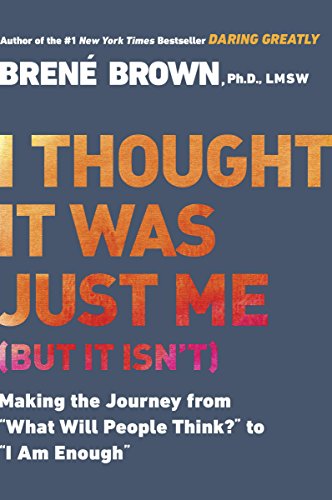
Bestselling author Brene Brown tackles the idea of perfectionism in I Thought It Was Just Me, But It Isn’t. This educational book delves into the effects of pursuing what we think we must do to attain to gain perfection. It pulls from seven years of research and over 100 interviews to shed light on the reality that our imperfections make us human and connect us. The author also looks closely at shame and how it hurts our self-esteem.
If you enjoyed our round-up of the best books to read for mental health, we have many more educational articles you can check out. You might want to check out our list of the best books for adults with autism.
“Shame corrodes the very part of us that believes we are capable of change.”
Brene Brown, I Thought It Was Just Me
Books for Children on Mental Health
5. A Blue Kind of Day by Rachel Tomlinson

Rachel Tomlinson is a psychologist passionate about helping kids understand their mental health. A Blue Kind of Day discusses depression in a way that’s easy for kids to understand. The book shows how depression feels in the body and how to support people who struggle with it with empathy, care, and patience. Simple language makes it accessible to even the youngest readers. Its illustrations are ethnically diverse, which adds to its appeal.
“Coen was having a blue kind of day . . . It was a slumping, sighing, sobbing kind of day.”
Rachel Tomlinson, A Blue Kind of Day
6. A Little SPOT of Anxiety: A Story About Calming Your Worries by Diane Alber

Diane Alber has created a charming set of books called the A Little SPOT series. A Little SPOT of Anxiety tells children where anxiety comes from and how it can become overwhelming if you don’t learn how to manage it. When that spot grows so you can’t do what you need or want to do, it needs help. The book teaches children practical coping mechanisms they can use to shrink that little spot of worry.
“From the tip of my finger to the center of my palm, I can do this! I can be calm!”
Diane Alber, A Little SPOT of Anxiety
7. Ruby’s Worry by Tom Percival

Ruby’s Worry by Tom Percival is a sensitive book encouraging children to share their biggest hidden worries with friends, parents, and guardians. It reminds parents and children alike that all children have fears and that if they aren’t shared, those worries get bigger and bigger every day until they can make you feel sad. The book is available as a durable board book, so children of all ages can start learning about their feelings and how to express them.
“Ruby had always been happy. Perfectly happy. Until one day . . . she discovered a worry.”
Tom Percival, Ruby’s Worry
8. The Sad Book by Michael Rosen

Featuring illustrations by the famous Quentin Blake, The Sad Book by Michael Rosen explores how to handle feelings of sadness. The author has experienced deep sadness of his own. In the book, he discusses his experiences and how he learned to cope. Rosen also reminds children that everyone has sad stuff, and they can be proud of themselves for managing their sadness well.
“Sometimes I’m sad, and I don’t know why. It’s just a cloud that comes along and covers me up.”
Michael Rosen, The Sad Book
9. Mr. Worry: A Story About OCD by Holly L. Niner

Mr. Worry: A Story About OCD tells the story of Kevin. Kevin has to do several routines before going to bed at night. Even though the little boy wants to stop these actions and knows they don’t make sense, he can’t stop. Caregivers and children alike will appreciate the careful way author Holly L. Niner addresses this serious and common concern. The book also gives children hope that help is possible.
“Kevin checked his closet. Nothing in there. He pushed the door to make sure it was closed. He pushed it one more time.”
Holly L. Niner, Mr. Worry: A Story About OCD
10. A Terrible Thing Happened by Margaret M. Holmes

Traumatic experiences can be hard for children to understand. Witnessing violence or other traumatic events can rewire a child’s brain and trigger a trauma response that can cause physical symptoms. A Terrible Thing Happened by Margaret M. Holmes is a gentle book that gives parents a tool to talk to their kids about the traumatic situation they are facing. It also provides a jumping-off point for a conversation about what therapy is and how to make it successful. The last section of A Terrible Thing Happened provides resources for parents to help them work with their traumatized children.
“Sherman Smith saw the most terrible thing. He was very upset. It really scared Sherman to see such a terrible thing.”
Margaret M. Holmes, A Terrible Thing Happened
Books for Men on Mental Health
11. Cry Like a Man by Jason Wilson

Author Jason Wilson spent much of his career working with boys in Detroit. During this work, he realized that there is a need for change in culture’s definition of masculinity to promote emotional well-being in men. Cry Like a Man is his memoir, and it explains the dangers of the “men don’t cry” mentality in modern society. Wilson’s goal with the book is to help men embrace healthy emotions so that they can restore their relationships.
“Men expect boys to act like men, but there’s rarely a man in their lives patiently teaching them how to be one.”
Jason Wilson, Cry Like a Man
12. Nothing’s Wrong: A Man’s Guide to Managing Emotions by David Kundtz

In Nothing’s Wrong: A Man’s Guide to Managing Emotions, David Kundtz discusses the dangers of making men hide and bottle up their emotions. The author reminds readers that men have deep emotions and that they shouldn’t ignore them. It provides practical suggestions on mastering and identifying emotions healthily while giving age-specific guidelines for teens and adults of all ages.
“How many times have we heard the question, ‘What’s wrong?’ It generally comes when we are noticeably feeling something. Our response to the question invariably is, ‘Nothing’s wrong,’ which always seems to be the wrong answer, at least not the answer that was expected or desired. The questioner is often-but not always-a woman.”
David Kundtz, Nothing’s Wrong: A Man’s Guide to Managing Emotions
13. Boys Don’t Cry: Why I Hid My Depression and Why Men Need to Talk About Their Mental Health by Tim Grayburn

Author Tim Grayburn struggles with depression but kept that struggle secret for ten years. The shame of admitting he had depression kept him from getting help. A loved one made him realize his need for help, and he decided to share his story. This led to the writing of Boys Don’t Cry, a book designed to break the stigma around men and mental health. It is a memoir with some poignant truths woven in.
“What kind of planet do we live on where it is acceptable for a twenty-two-year-old lad to be left to get on with it and figure out what had just happened all on his own?”
Tim Grayburn, Boys Don’t Cry
14. Man Down: A Guide for Men on Mental Health by Charlie Hoare

Man Down: A Guide for Men on Mental Health explores men’s challenges when discussing their emotions. In addition, it explores practical ideas for getting help, protecting one’s well-being, and identifying specific mental health concerns. Author Charlie Hoare explores suicidal thoughts, depression, anxiety, and gender expectations in this book.
“To get men talking about mental health, we need to break down the stigmas associated with it.”
Charlie Hoare, Man Down: Guide for Men on Mental Health
Books for Women on Mental Health
15. The Emotionally Exhausted Woman: Why You’re Feeling Depleted and How to Get What You Need by Nancy Colier

Today’s women have a lot on their plates, and the burden of it all leads to emotional exhaustion. Nancy Colier explores this reality in The Emotionally Exhausted Woman. Collier discusses how women often take on the emotional load of trying to please others. The author is a therapist and spiritual teacher, and the book dives into ways women can build their self-esteem and become empowered to take back their emotional energy without the traditional and pointless forms of self-care, like a glass of wine and bubble bath.
” ‘Who’s taking care of you?’ This one question brings more women to tears than any other question I ask. After the tears, the response that comes is usually a simple, no one.”
Nancy Colier, The Emotionally Exhausted Woman
16. Maybe You Should Talk to Someone: A Therapist, Her Therapist, and Our Lives Revealed by Lori Gottlieb
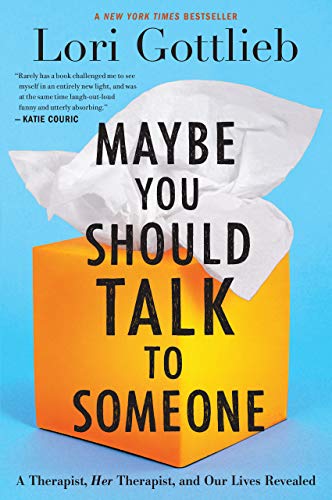
Maybe You Should Talk to Someone is an Apple Best Books Pick, Book of the Month Club selection, and Oprah Magazine’s Best Nonfiction Book for 2019. In this work, Lori Gottlieb, a licensed therapist, finds herself in need of a therapist, and she takes the opportunity to invite people into her world to see mental health from the point of view of a clinician and a patient. It removes some stigma and encourages readers to seek help when needed.
“We tend to think that the future happens later, but we’re creating it in our minds every day. When the present falls apart, so does the future we had associated with it. And having the future taken away is the mother of all plot twists.”
Lori Gottlieb, Maybe You Should Talk to Someone
17. Untamed by Glennon Doyle
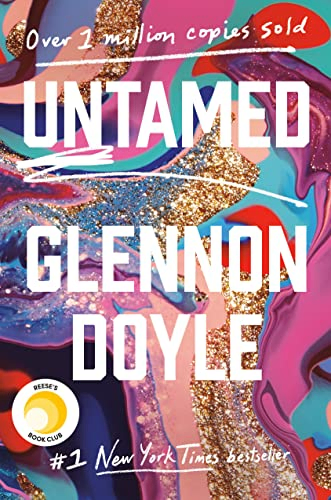
With over two million copies sold, Untamed is a New York Times bestselling book by Glennon Doyle. The book teaches women how to find their true selves by exploring the uncomfortable feelings of discontent inside them. This memoir gives women a wake-up call to learn to live fully, not continually put their needs aside for the people in their care. Doyle discusses important topics like boundaries, making peace with body image concerns, and how to honor anger and heartbreak.
“The truest, most beautiful life never promises to be an easy one. We need to let go of the lie that it’s supposed to be.”
Glennon Doyle, Untamed
18. Set Boundaries, Find Peace: A Guide to Reclaiming Yourself by Nedra Glover Tawwab

In Set Boundaries, Find Peace, Nedra Glover Tawwab explores how women can find freedom by setting boundaries with the people around them. From toxic people to overly needy partners, she teaches readers what healthy boundaries look like and how to say “no” respectfully yet firmly. It also dives into the six different types of boundaries people can set. Tawwab is a relationship expert and licensed counselor who brings her professional work into her book.
“Focusing on how others might respond is one way we ruminate, which impacts our ability to act.”
Nedra Glover Tawwab, Set Boundaries, Find Peace
19. What Happened to You? by Oprah Winfrey

In What Happened to You? talk show host Oprah Winfrey explores how childhood traumas impact us as adults. By looking into why we do what we do, Winfrey gives readers the power to stop blaming themselves and start healing. The book includes conversations with Dr. Bruce Perry, a brain and trauma expert, making it informational and factual, but it also has Winfrey’s signature warmth. Her goal with the book is to change the conversation from “What’s wrong with you?” to “What happened to you?”
“We elicit from the world what we project into the world; but what you project is based upon what happened to you as a child.”
Oprah Winfrey, What Happened to You?
Books Addressing Specific Mental Health Conditions
20. The Highly Sensitive Person: How to Thrive When the World Overwhelms You by Dr. Elaine N. Aron
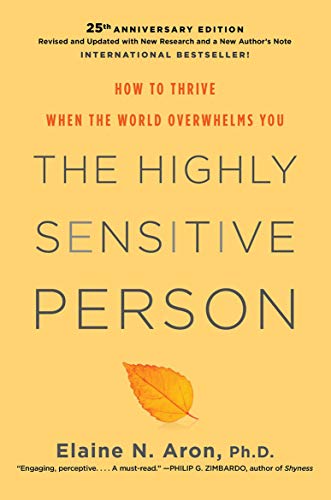
Published in 1997, The Highly Sensitive Person opened the door to a discussion of a group of people who feel overwhelmed by all the sensory stimuli around them. Rather than labeling these people as “shy” or “overly sensitive,” Dr. Elaine N. Aron explores the idea that they are Highly Sensitive People, or HSPs. The groundbreaking work helps HSPs reframe their experiences and unique neurology positively and learn to view their sensitivities as beneficial parts of their personalities.
“This greater awareness of the subtle tends to make you more intuitive, which simply means picking up and working through information in a semiconscious or unconscious way. The result is that you often, ‘just know’ without realizing how.”
Elaine N. Aron, The Highly Sensitive Person
21. Burnout: The Secret to Unlocking the Stress Cycle by Dr. Emily Nagoski and Dr. Amelia Nagoski
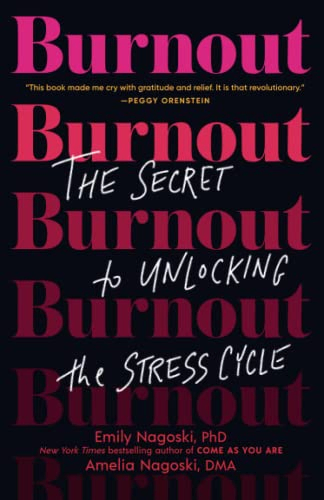
In Burnout: The Secret to Unlocking the Stress Cycle, Drs. Emily and Amelia Nagoski explore burnout, how it differs for men and women, and how to manage and minimize it. It explores the biological stress cycle, the challenges of body image issues, and the need for rest and human connection. The authors, who are sisters, use science and personal experiences to talk about these topics.
“In short, emotions are tunnels. If you go all the way through them, you get to the light at the end. Exhaustion happens when we get stuck in an emotion.”
Emily Nagoski and Amelia Nagoski, Burnout: The Secret to Unlocking the Stress Cycle
22. It Didn’t Start with You: How Inherited Family Trauma Shapes Who We Are, and How to End the Cycle by Mark Wolynn

Family trauma is the subject of It Didn’t Start with You by Mark Wolynn. The book explores how trauma can be passed down through generations and how understanding this can help reduce its power. Mark Wolynn has been studying generational trauma for years, and he puts the latest scientific research into words people can understand. He also explores the Core Language Approach, his method for treating family trauma, to help people start healing.
“When entangled, you unconsciously carry the feelings, symptoms, behaviors, or hardships of an earlier member of your family system as if these were your own.”
Mark Wolynn, It Didn’t Start with You
23. The Bipolar Disorder Survival Guide by Dr. David J. Miklowitz

Bipolar disorder is not an easy diagnosis for the individual and their loved ones, but some strategies can help. The goal of The Bipolar Disorder Survival Guide is to give patients or their caretakers practical strategies to manage this disorder in a healthy way. Dr. David Miklowitz offers strategies for all ages, explores medications and therapy, and provides hope to those dealing with the illness.
“Beyond taking medications and meeting with a psychiatrist, there are good and bad ways to manage your disorder.”
David J. Miklowitz, The Bipolar Disorder Survival Guide
24. This Is Depression: A Compassionate Guide for Anyone Who Wants to Understand Depression by Dr. Diane McIntosh

Depression can be a debilitating illness that hurts both the mind and the body, and in This Is Depression, author Dr. Diane McIntosh provides the information people need to know to understand, combat, and heal from this common mental illness. It explores genetics, hormones, life experiences, and even physical illness and their impact on depression. It equips readers with practical tools they can use to cope. Looking for more inspirational books to add to your reading list? Check our guide to the best life changing books!
“Depression is a highly personal experience. It doesn’t just cause miserable emotional and physical symptoms: it also interferes with an individual’s ability to function, whether at work, school, home, or in social situations.”
Dr. Diane McIntosh, This Is Depression
Self-Help Books on Mental Health

In The Unapologetic Guide to Black Mental Health, Dr. Rheeda Walker dives into the mental health crisis in the Black community. The book looks at why there is such a crisis in the world of mental health among Black people, and then it teaches readers how to recognize mental health problems and how to access help in a healthcare system that doesn’t offer equality. The practical guidance combined with real-world research makes this a valuable book for people in this world.
“Be careful about how you hide yourself from people who care. Your hiding could set up a life-or-death situation whereby you are in need and there is no one left to help.”
Dr. Rheeda Walker, The Unapologetic Guide to Black Mental Health
26. Cognitive Behavioral Therapy Made Simple: 10 Strategies for Managing Anxiety, Depression, Anger, Panic and Worry by Seth J. Gillihan

Cognitive Behavioral Therapy Made Simple is a practical self-help guide with ten practical strategies for managing common mental health concerns. It teaches readers how to soothe their minds and grow as a person while boosting their overall well-being. Readers who practice these techniques successfully can experience lasting change in their daily life and overall mental health. The book’s author, Dr. Seth J. Gillihan, is a licensed psychologist specializing in CBT therapy.
“Do enjoyable activities. Think helpful thoughts. Face your fears. Be present. Take care of yourself.”
Seth J. Gillihan, Cognitive Behavioral Therapy Made Simple
27. Stop Overthinking!: 9 Steps to Eliminate Stress, Anxiety, Negativity and Focus on Your Productivity by Harley Hunter

In Stop Overthinking!, Harley Hunter provides readers with nine practical steps to stop the habit of overthinking. Overthinking can drain energy and cause a drop in creativity while also creating problems for the digestive system. Since the human brain has natural wiring to watch for danger, stopping this process is difficult but not impossible. The book allows readers to regain control of their thinking, embrace a lifestyle with less overall anxiety, and learn to practice mindfulness.
“The key to overcoming this, however, is by learning to look at your thoughts instead of through your thoughts.”
Harley Hunter, Stop Overthinking!
28. Hope and Help for Your Nerves: End Anxiety Now by Dr. Claire Weekes

Dr. Claire Weekes pioneered modern studies into anxiety and nervous illnesses and regularly lectured in psychiatric hospitals before she died in 1990. In Hope and Help for Your Nerves, she provides readers with practical steps to heal the nervous system and conquer their fears for good. The book draws from Dr. Weekes’ own experience with patients. Its step-by-step structure makes it a bestselling work on the topic.
“However long you may have been ill, your body is waiting to recover in exactly the same way as the body of a person who has been ill for only a short time.”
Dr. Claire Weekes, Hope and Help for Your Nerves
29. Emotional First Aid: Healing Rejection, Guilt, Failure, and Other Everyday Hurts by Dr. Guy Winch

Everyone feels rejection and guilt, yet for some people, these negative emotions derail them. Dr. Guy Winch looks at how people can heal from these emotional wounds more effectively in Emotional First Aid. The book uses scientific research and real-life examples to teach readers how to do this. Its step-by-step layout outlines fast, effective treatments to let people give their emotions some first aid.
“Rejections can cause four distinct psychological wounds, the severity of which depends on the situation and our emotional health at the time. Specifically, rejections elicit emotional pain so sharp it affects our thinking, floods us with anger, erodes our confidence and self-esteem, and destabilizes our fundamental feeling of belonging.”
Dr. Guy Winch, Emotional First Aid
30. Why Has Nobody Told Me This Before? by Dr. Julie Smith
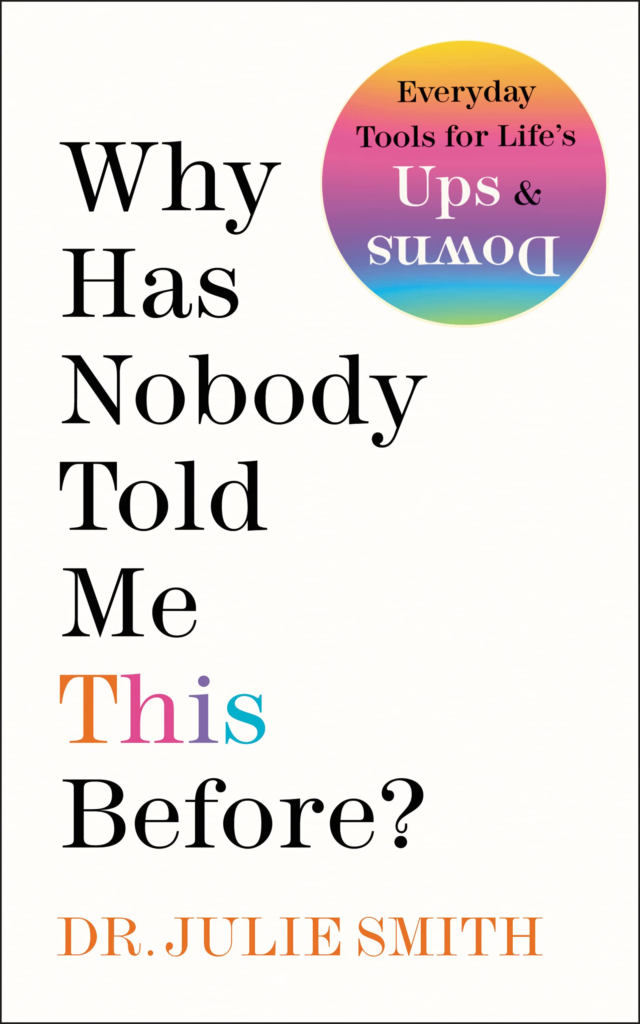
Why Has Nobody Told Me This Before? gives readers coping techniques to help them with their resilience. Written by Dr. Julie Smith, a clinical psychologist, the book looks at important topics like how to deal with anxiety, how to handle criticism, and what to do to break your low mood and negative thought patterns. Full of practical advice, it is a must-read for anyone looking for guidance to break free from negativity and enjoy a positive outlook for their life.
“Thoughts are not facts. They are a mix of opinions, judgments, stories, memories, theories, interpretations, and predictions about the future.”
Dr. Julie Smith, Why Has Nobody Told Me This Before?
Looking for more? Check out our round-up of the best essays about mental health!